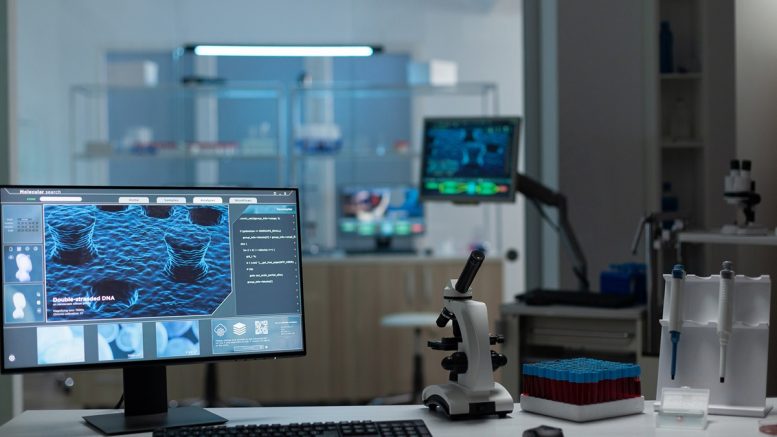Smart automation promises to transform life sciences research and development operations, and streamline pharma companies’ path to market while enhancing patient safety. But how far have they come, and where are investments currently focused to maximise the benefit? Drawing on new industry-specific research into the industry’s evolving aspirations for AI and intelligent automation, ArisGlobal’s Emmanuel Belabe explores how far companies have come and the potential that remains untapped.
In the second half of 2023, ArisGlobal conducted its latest life sciences industry research[1] to track pharma companies’ evolving expectations of AI in the context of intelligent regulatory and safety process automation. The international study, of 80+ organisations, spanned every patient treatment process domain, from CROs to young biotechs. It assessed where life sciences companies are currently on the automation value spectrum, and where their ambitions lie, as rising data complexity intensifies the need for strategic technology use. The discussion below unpacks the findings.
Matthew Driver, Journal of mHealth: What stood out most for you in the findings?
Emmanuel Belabe, ArisGlobal (EB): The gulf between current use and intention. While the Life Sciences industry appears fairly mature in its view of next-generation automation, it soon becomes clear that this is primarily an aspiration. Although 75%+ of surveyed pharma organisations claim they already use some form of advanced automation within their processes today – up 13% from 2022 and just 5% in 2020, only 8% have applied advanced automation in “all” or “most” of their processes at this point. (By advanced automation, we mean the adoption of artificial intelligence (AI) and machine learning (ML).)
MD: How do you interpret that?
EB: Awareness of the opportunity for AI-based transformation of knowledge work and essential processes is growing. More than seven in 10 respondents went on to express plans to expand business process automation over the next 18 months. The trend now is to move on from rudimentary, fairly crude process automation, towards a more sophisticated capability that tangibly alleviates the pressures on Safety and Regulatory professionals.
MD: What’s the difference?
EB: Early robotic process automation (RPA) solutions harnessed optical character recognition and rules-based workflow to identify and manage standard documents and structured data in a fairly basic way. Today, thanks to intelligent, AI-powered automation, and the ability to identify and analyse all kinds of data, it’s possible to distil all kinds of new actionable insights – irrespective of how colossal the volumes, or how diverse the range of sources. As AI and ‘deep learning’ solutions advance in line with the scale and sophistication of available data, life sciences R&D organisations are growing more ambitious in their ability to harness data and its insights in ever smarter ways. That could be to hone decision-making, drive efficiency gains, and deliver important treatments to patients more affordably.
MD: What has held pharma companies back until now, with all of this?
EB: The challenge previously has been how to assess, interpret and reliably harness vast amounts of unstructured data (in documents, in emails or on paper, rather than in a searchable database) which represent immense potential value if Safety, Quality, Regulatory and Clinical teams had the resources to process it all.
This is where the latest knowledge-based intelligent automation technologies come in (including machine translation and a growing range of artificial intelligence capabilities, such as Generative AI and deep learning). These make it possible to distil reliable, actionable insights from across that wealth of data in all its forms. It was the pace of pharma companies’ transitions to intelligent automation that we were particularly keen to identify in this latest study, and we found that 60% of organisational leaders were looking to explore new usage and/or increase usage of AI/ML over the next 18 months.
MD: What has prompted this?
EB: In the survey, respondents reported the top five benefits of basic automation as being efficiency gains, increased quality, cost savings, increased speed, and reduced risk. But now they are craving more, hence the planned adoption of AI and machine learning.
Typically respondents see automation and AI as having the potential to increase positive outcomes and empower professionals across the drug development cycle. Increased adoption of these technologies is expected to benefit patients, through increased drug discovery, personalised therapies, clinical trial acceleration, enhanced care, and improved data analysis. Other anticipated business benefits include increased speed, superior decision-making, and more efficient processes – all critical success factors in a highly competitive industry.
MD: What about challenges, or barriers to adoption of these more advanced capabilities?
EB: Many organisations’ next-level AI ambitions are inhibited by integration challenges. While the most substantial blocker to AI adoption in life sciences is budget (cited by 53.6%), a notable 36% highlight lack of integration with existing technology. More than two-thirds (68%) of respondents went on to say they considered or had found it “very difficult” or “somewhat difficult” to integrate automation technology with other systems and/or data.
This barrier to advanced automation goes some way to explaining some of the identified hesitancy around where the technology could take companies in the future. That’s particularly as new opportunities emerge to exploit real-world data (RWD) as part of critical but labour-intensive processes such as safety signal detection and validation.
MD: What did the survey uncover in terms of companies’ plans for more ambitious use of data, across safety and regulatory operations?
EB: There is an appetite to harness RWD where possible to unlock the next level of patient treatment innovation. In our research, just over half (51.2%) of respondents suggested that their organisation is already connected to some form of RWD, up from 31.5% in 2022; moreover 54% of those currently connected to RWD said they are looking to increase the data’s usage.
For those not yet connected to RWD, 20.4% indicated that they are either in the process of connecting to such resources, or have plans to within the next 18 months.
Access to high volumes of good-quality, current data will be important to build Large Language Models to drive Generative AI’s use in the industry, too. As it was for early automation, data is the key driver of Generative AI. The more data an organisation can leverage, the stronger GenAI’s models (algorithms) can be accurately trained to help identify and qualify the next raft of industry breakthroughs.
According to respondents, the most important value from RWD in drug development is linked to clinical and patient safety activities. Respondents indicated that the ability to draw on and analyse additional data and insights could help de-risk clinical trials, expedite the trial process, speed up approval processes, and positively impact signal detection.
MD: Was there anything else of note that came out of the study?
EB: That regulatory bodies/health authorities will be important in cementing the potential and the success of advanced automation in promoting safe new innovation in the pharma industry. Without careful management, approaches, and implementation, RWD data use could become more of a point of contention in interactions between regulatory agencies and organisations, a number of respondents indicated. RWD is being used within the US FDA’s Sentinel Initiative and by EMA in Europe, but there needs to be further willingness to partner with organisations in life sciences to pave the way to harnessing RWD in other use cases.
The full industry report that explores this topic in more depth, AI & Automation: How does your company’s progress rank compared to the findings of our new industry survey?, is available for download here.
Emmanuel Belabe is Senior Vice President for Customer Success within the Global Customer Support and Solution Consulting organisation at ArisGlobal. ArisGlobal, an innovative life sciences technology company and creator of LifeSphere®, is transforming the way today’s most successful life sciences companies develop breakthroughs and bring new products to market. www.arisglobal.com.
References
[1] ArisGlobal 2024 Industry Survey Report: Life Sciences R&D Transformation: Ambitions for Intelligent Automation & Today’s Reality





